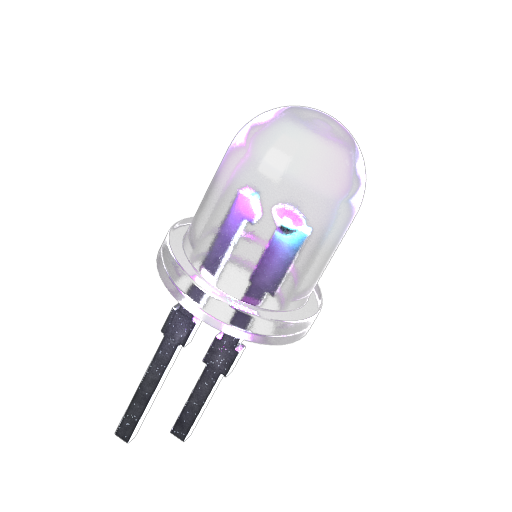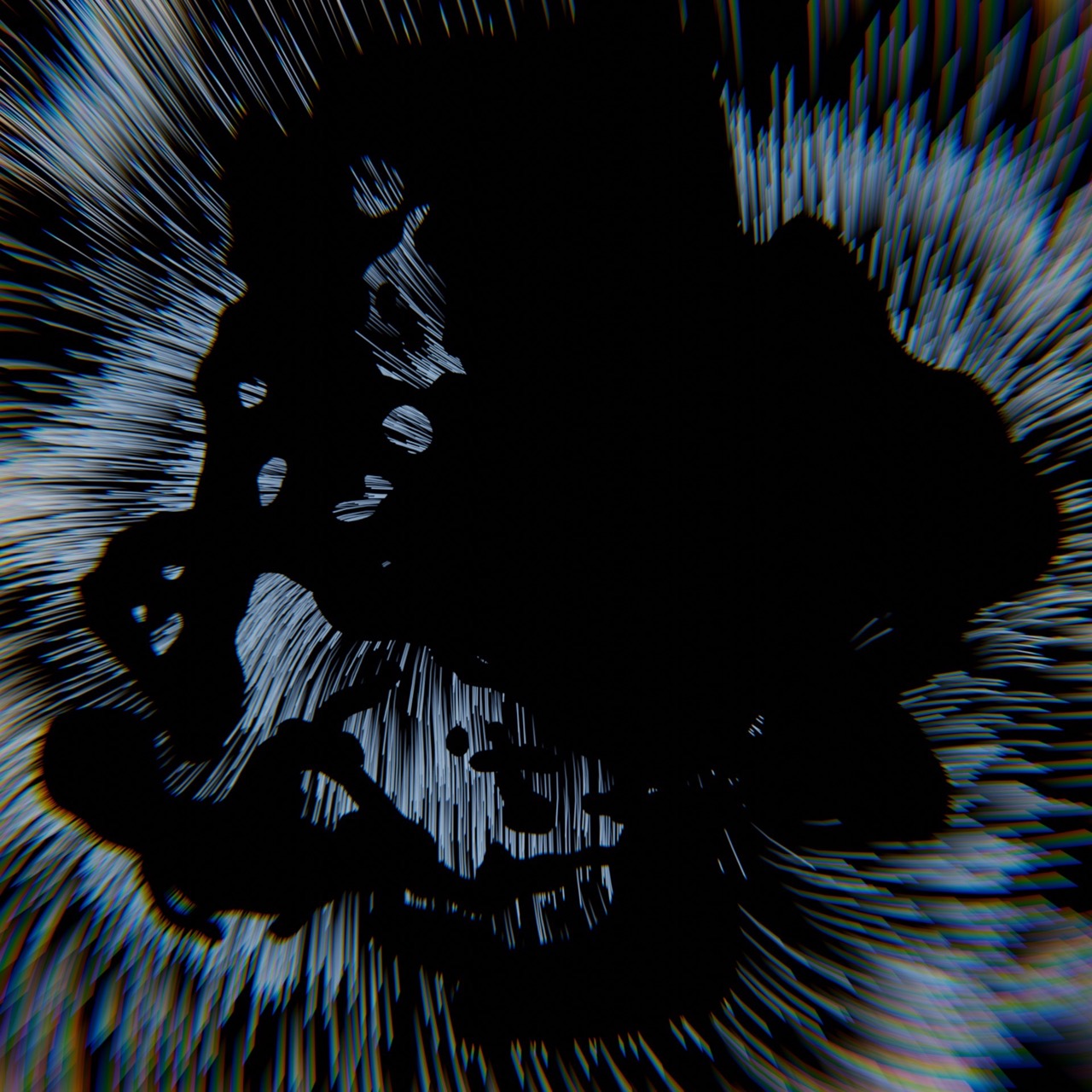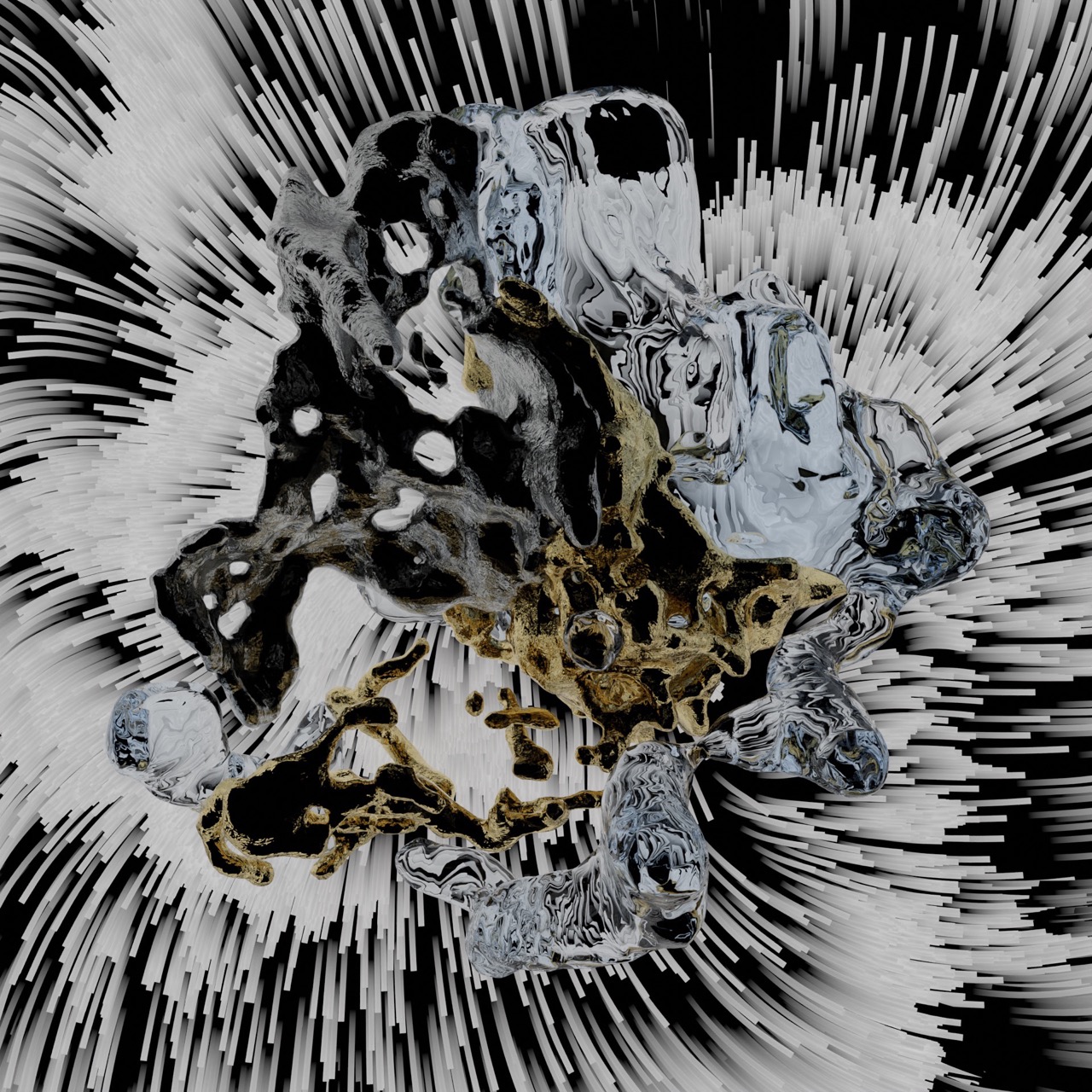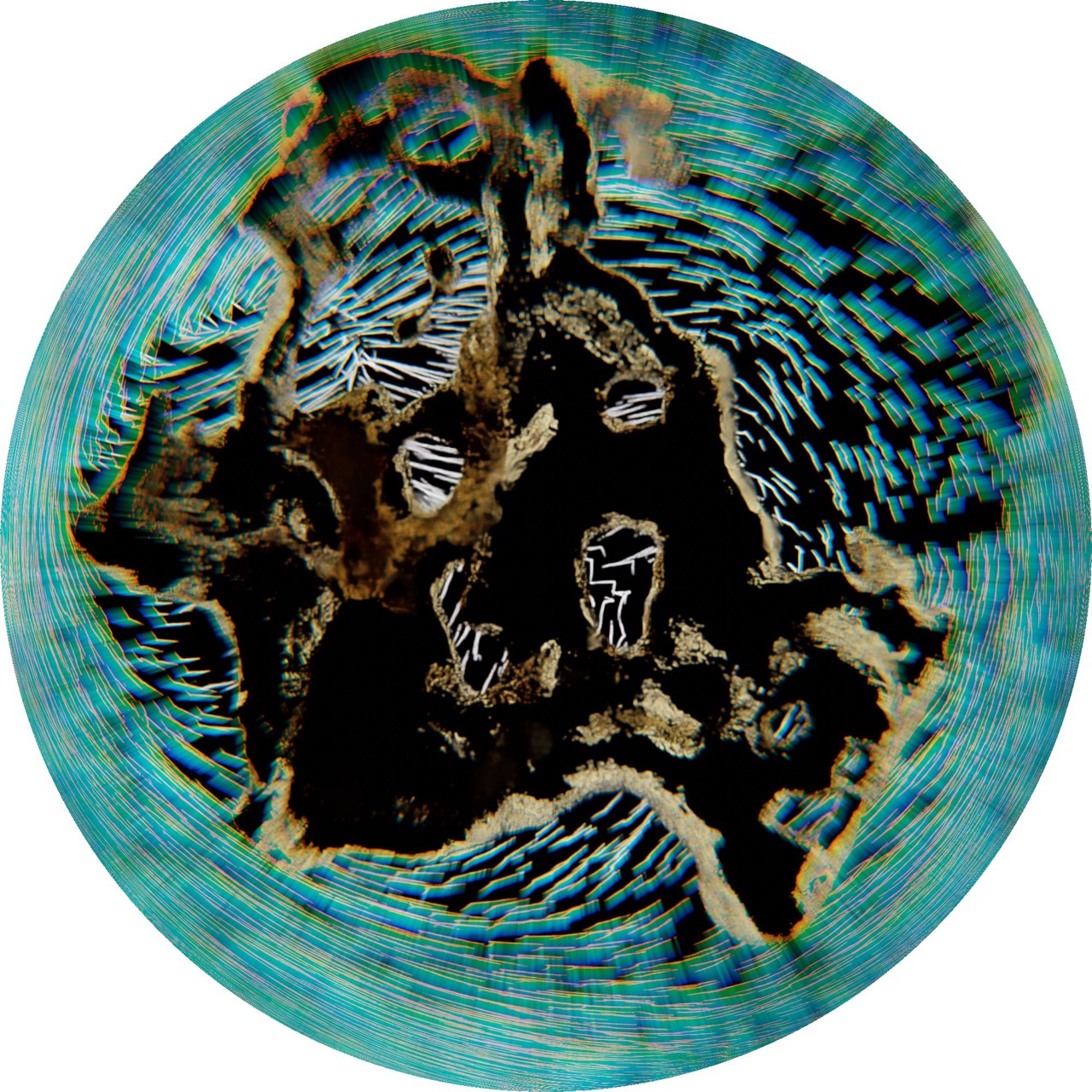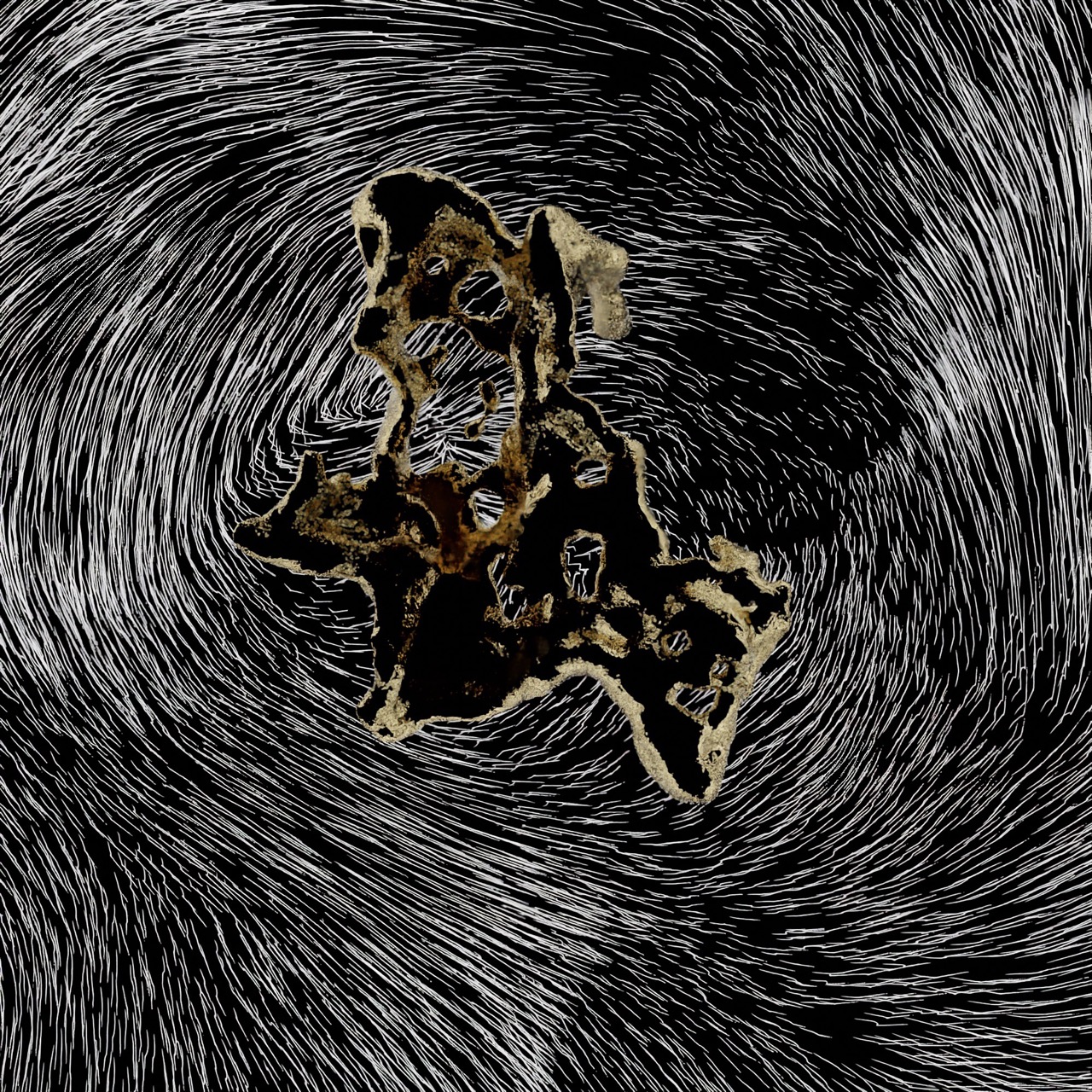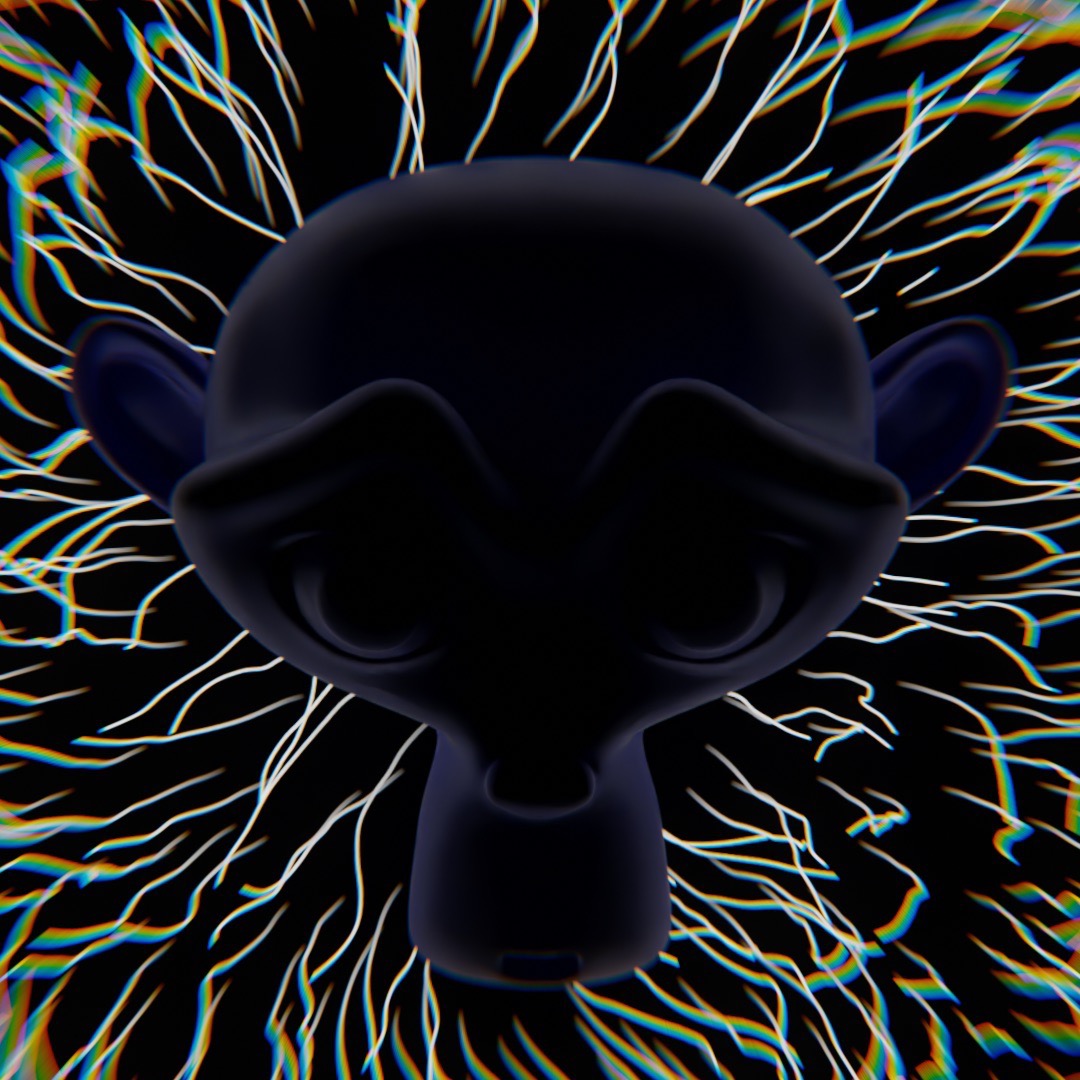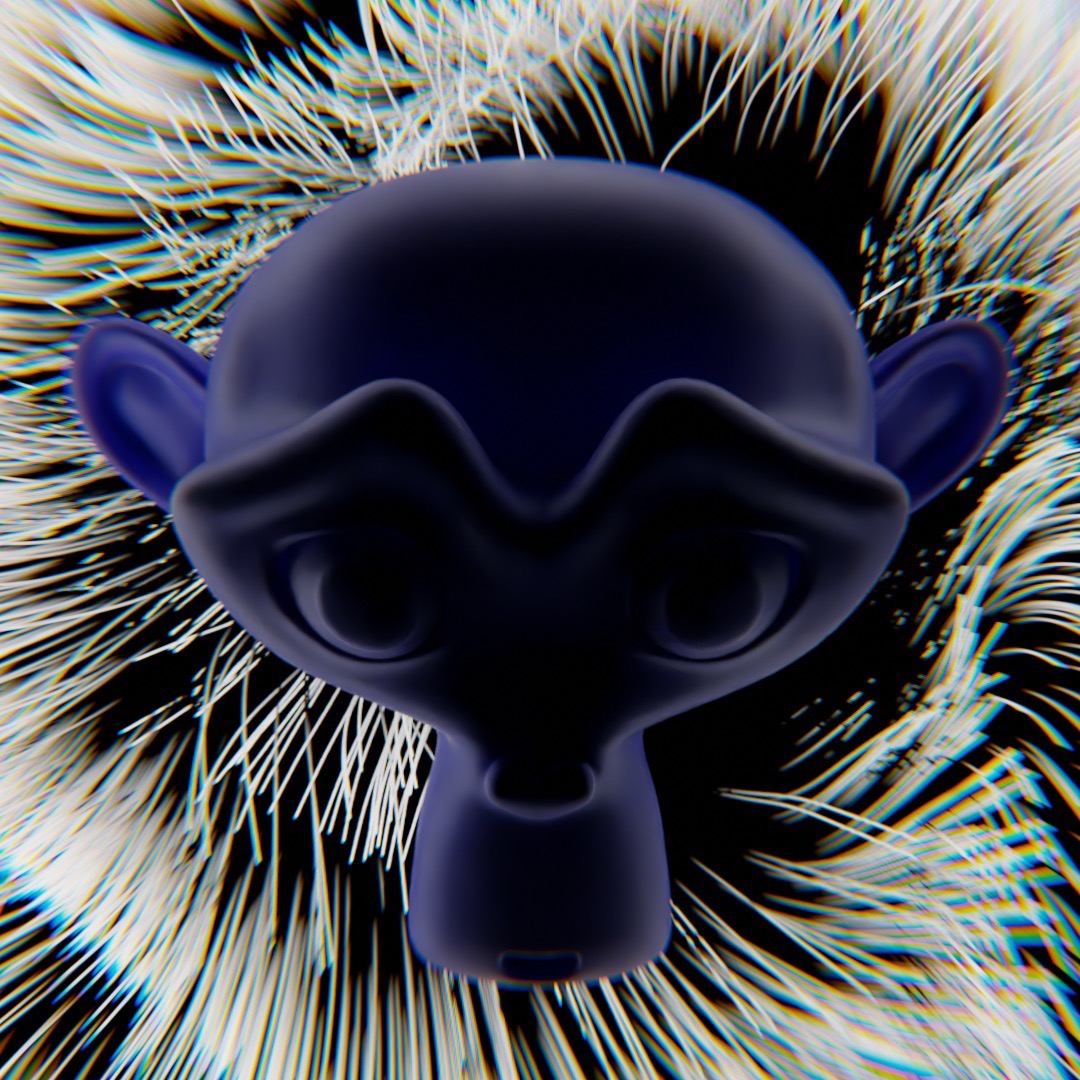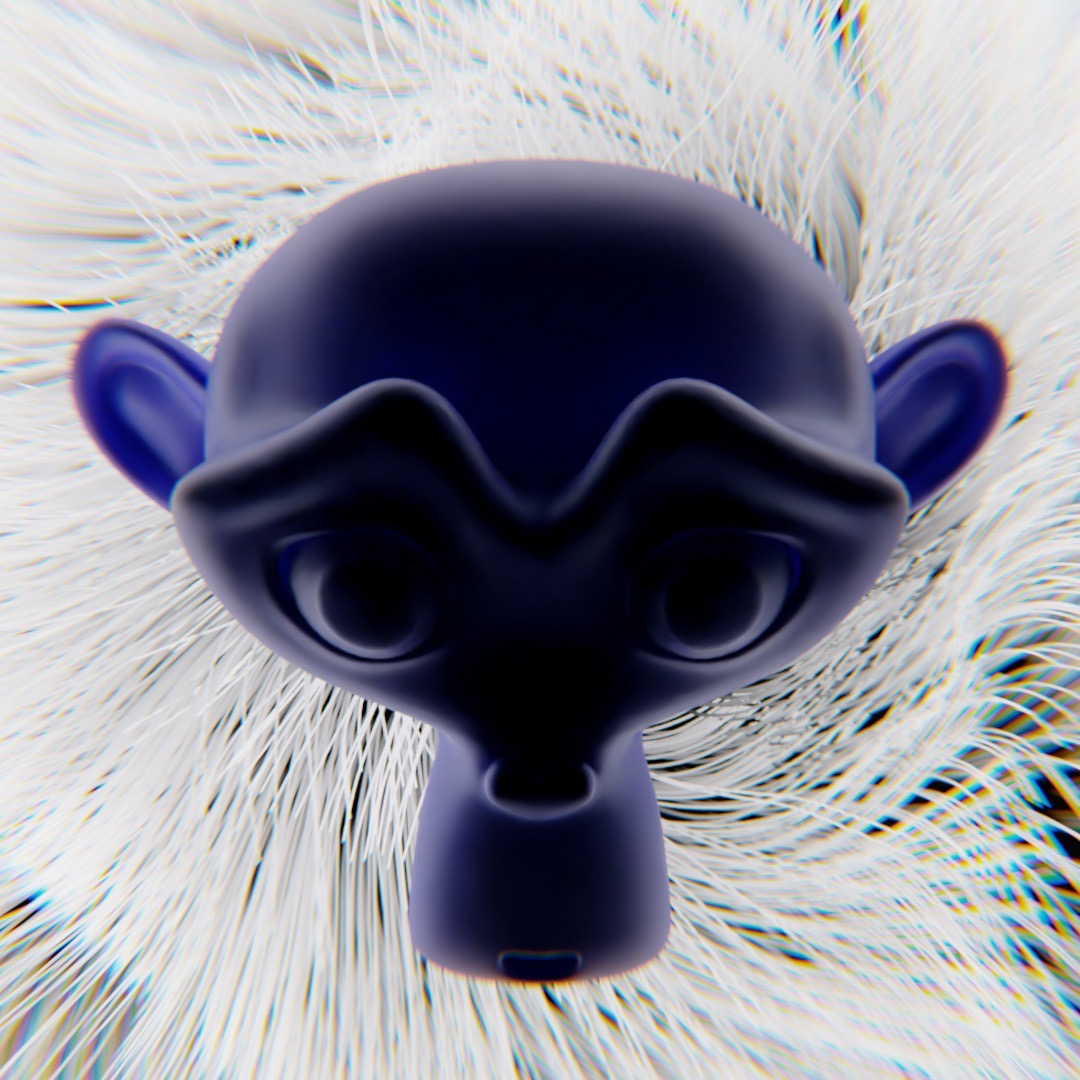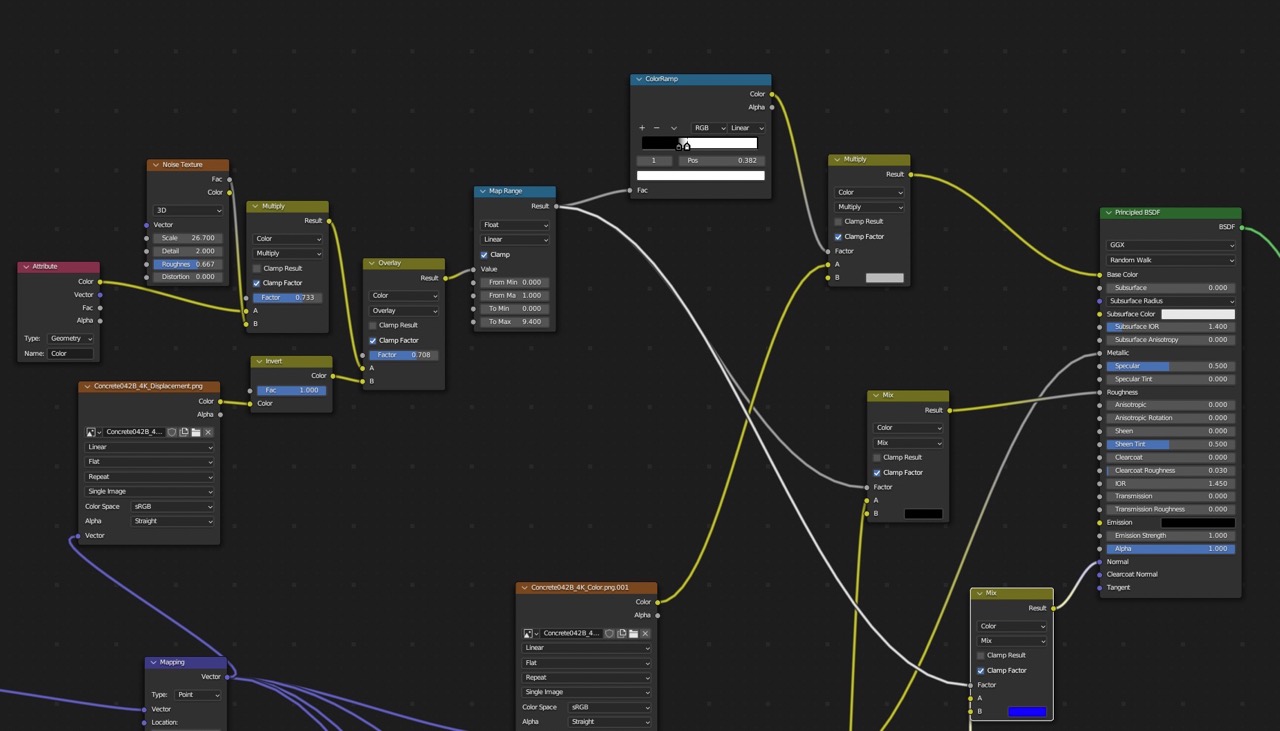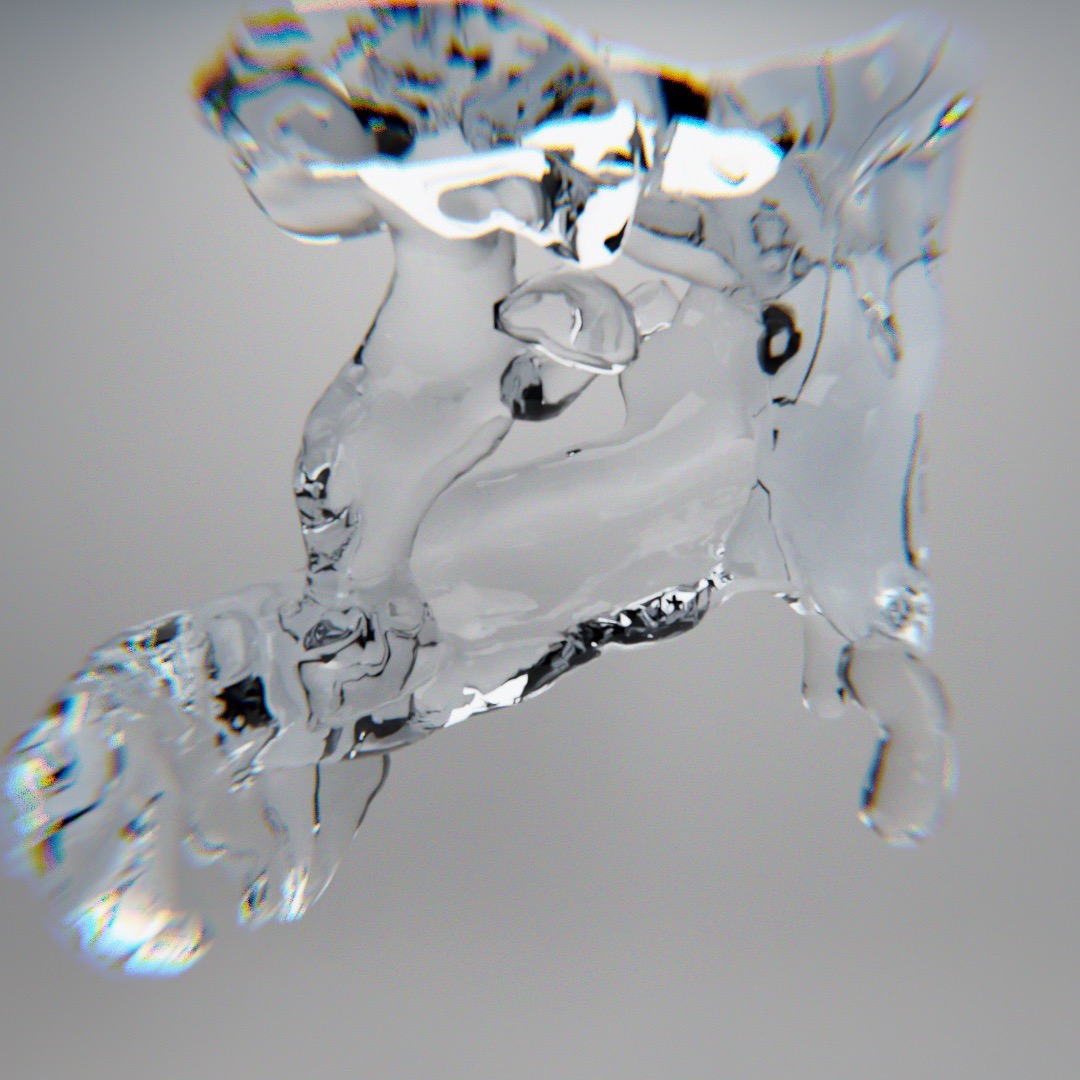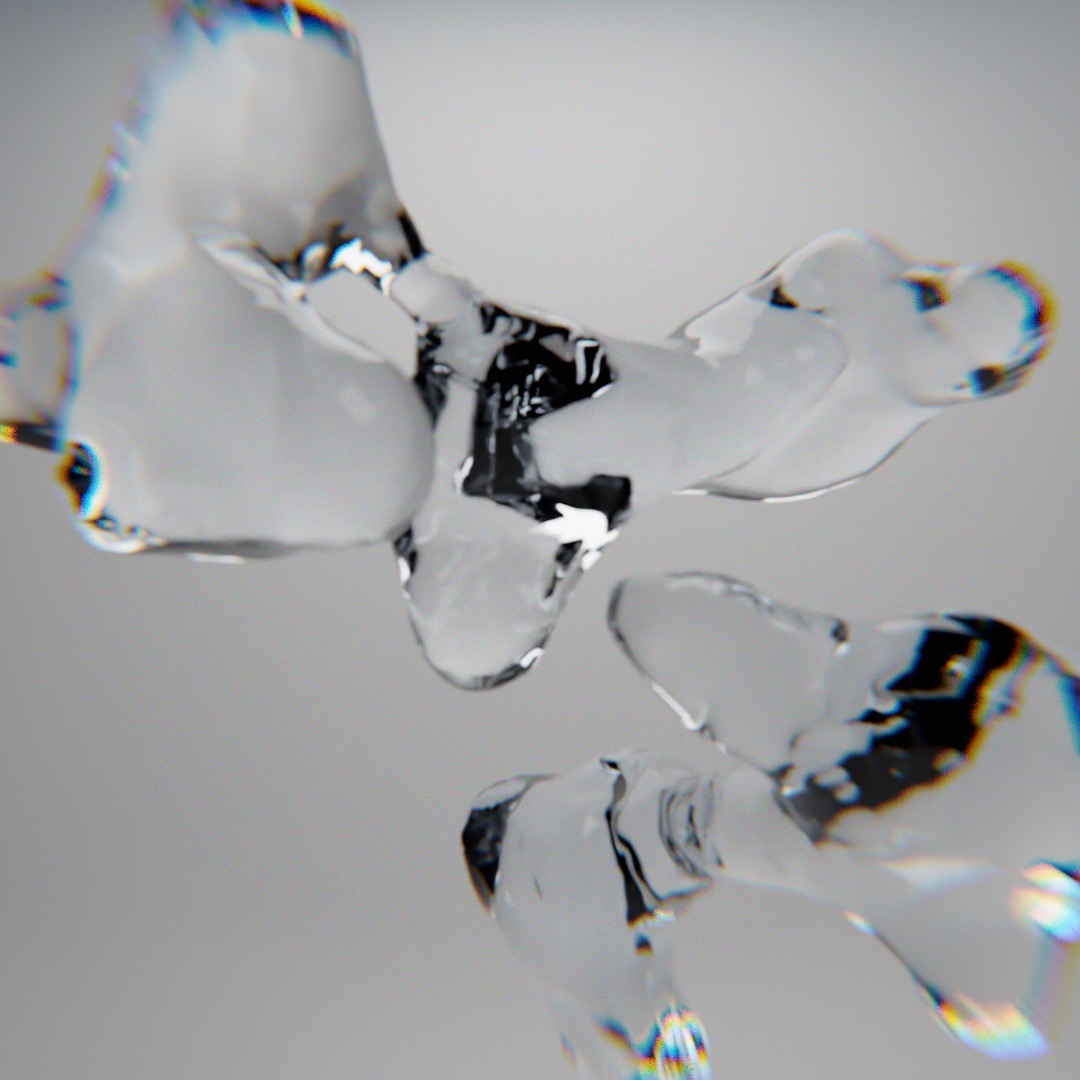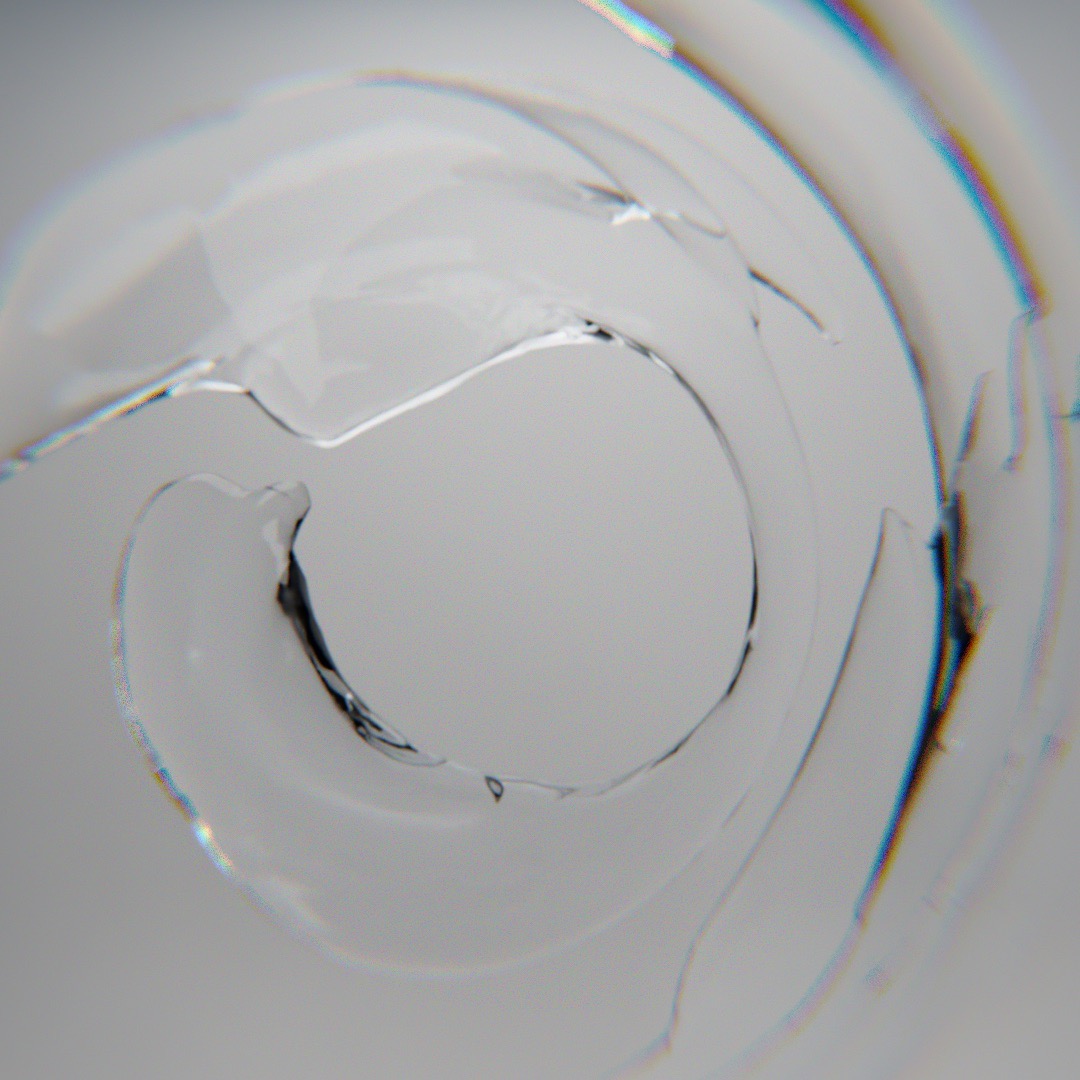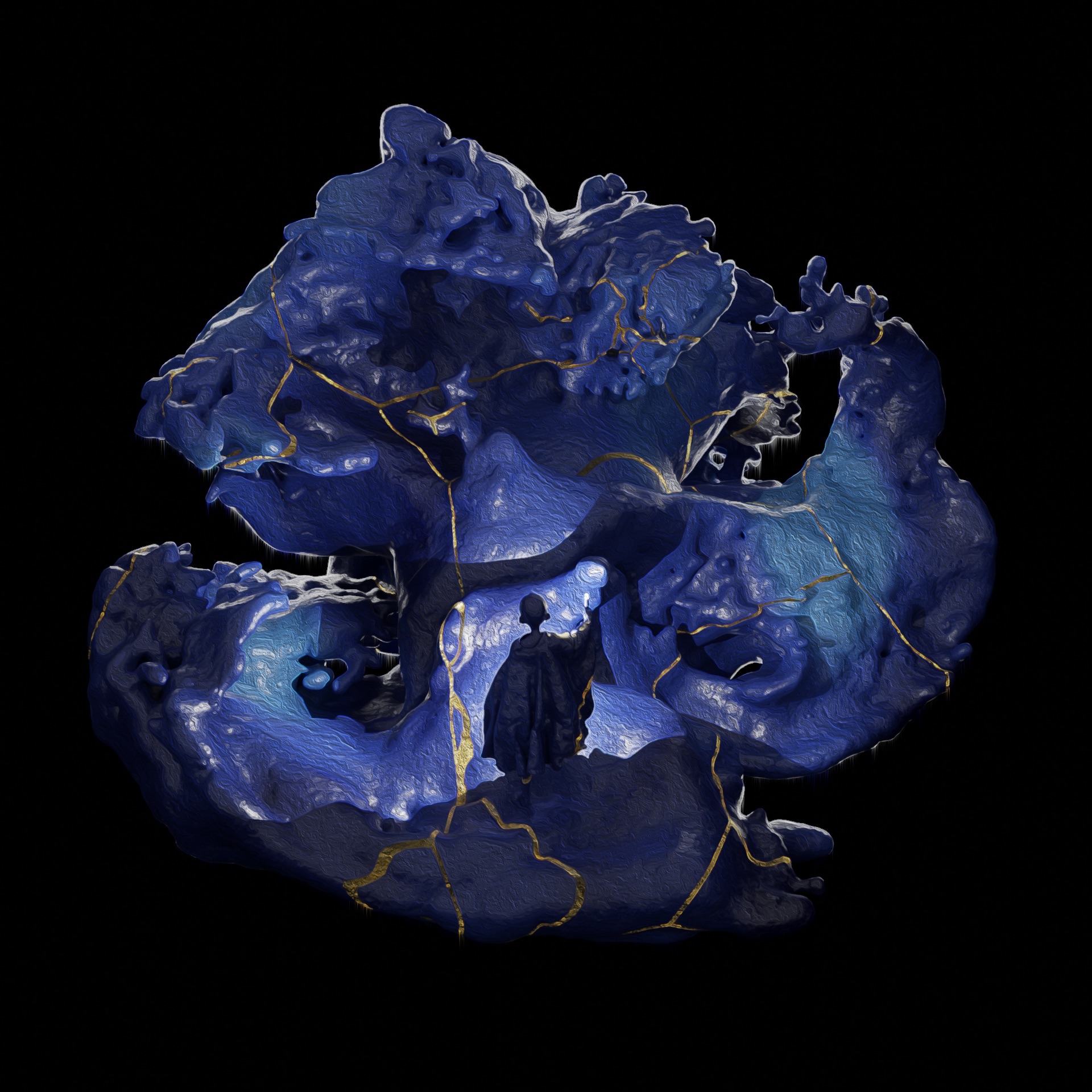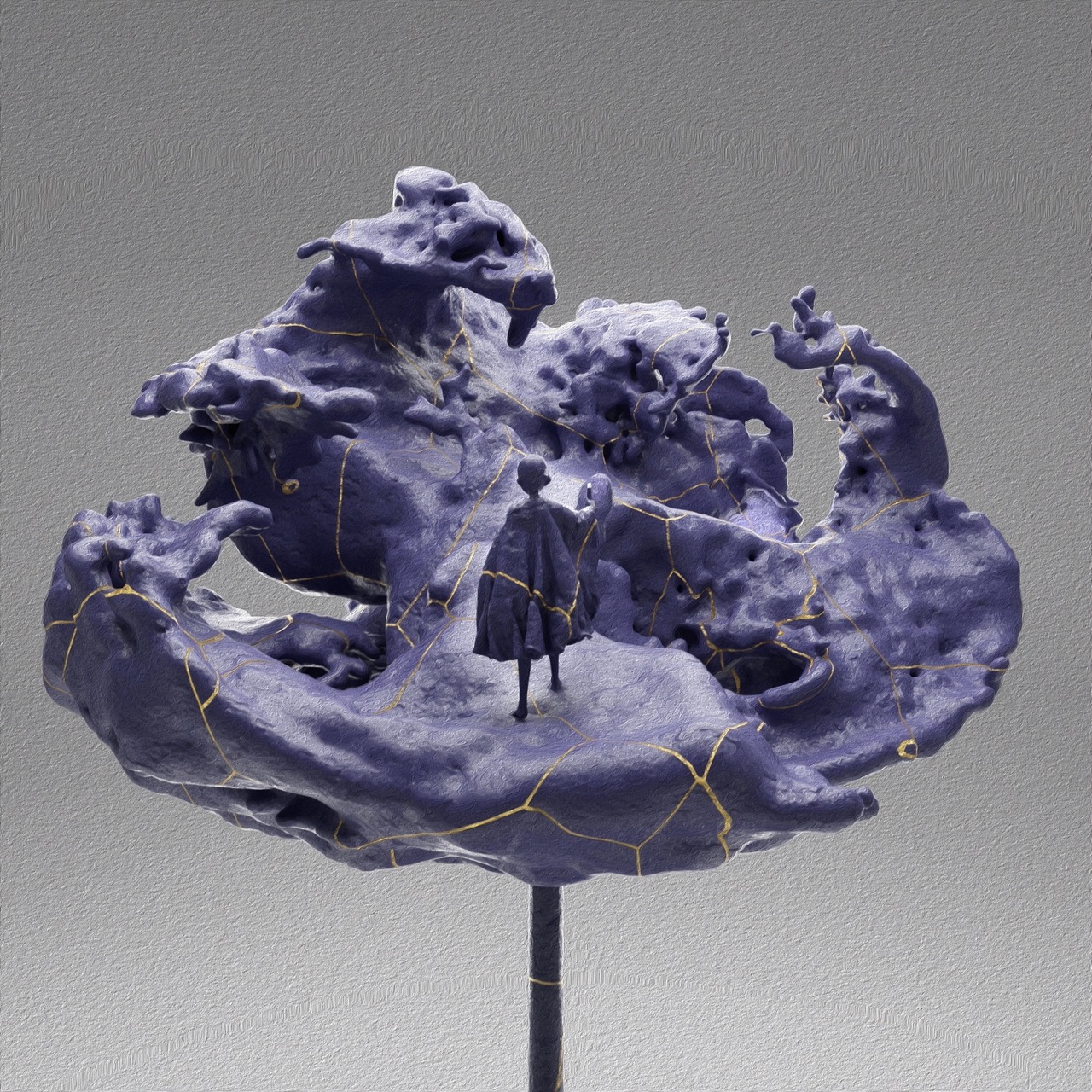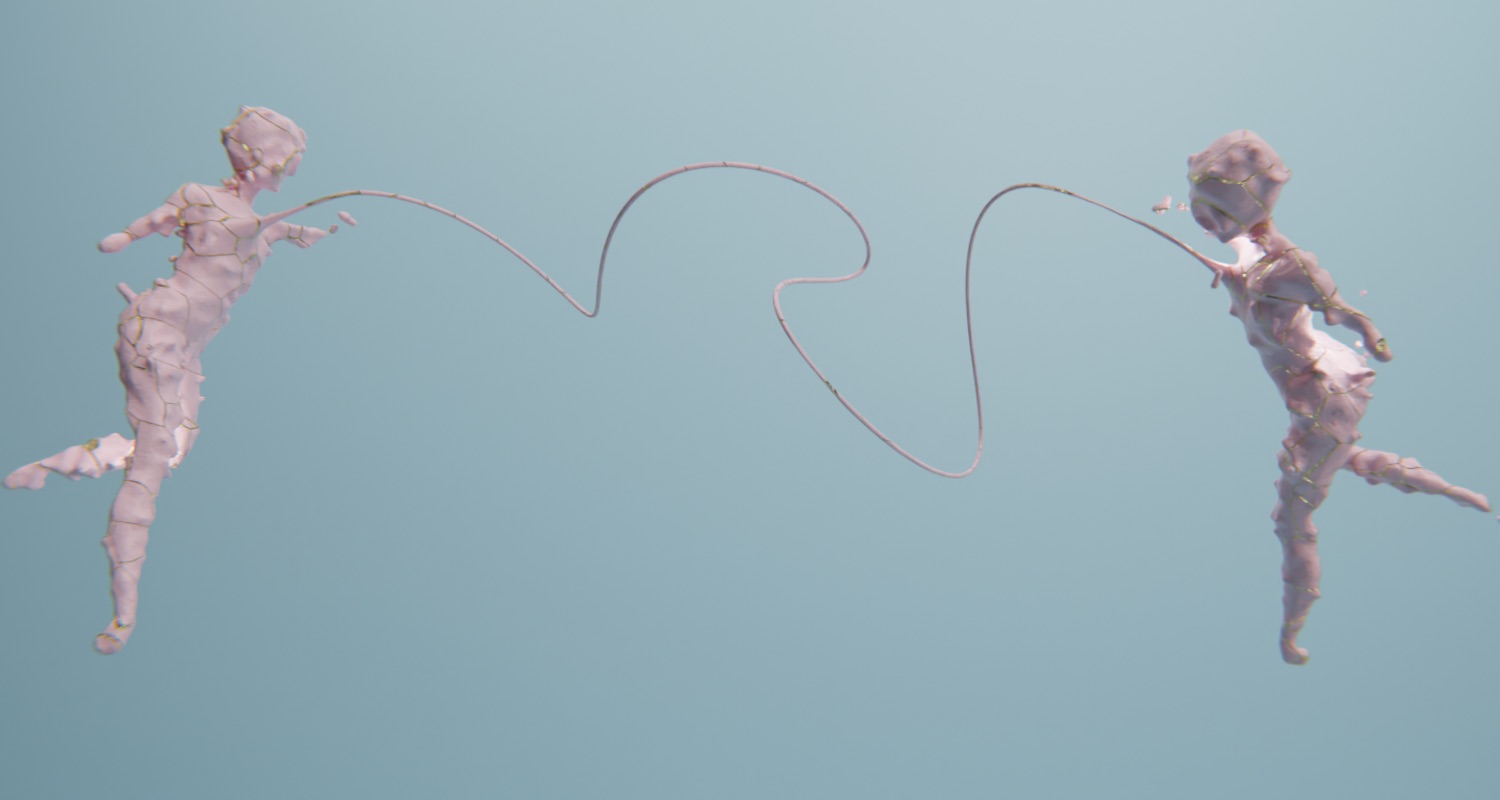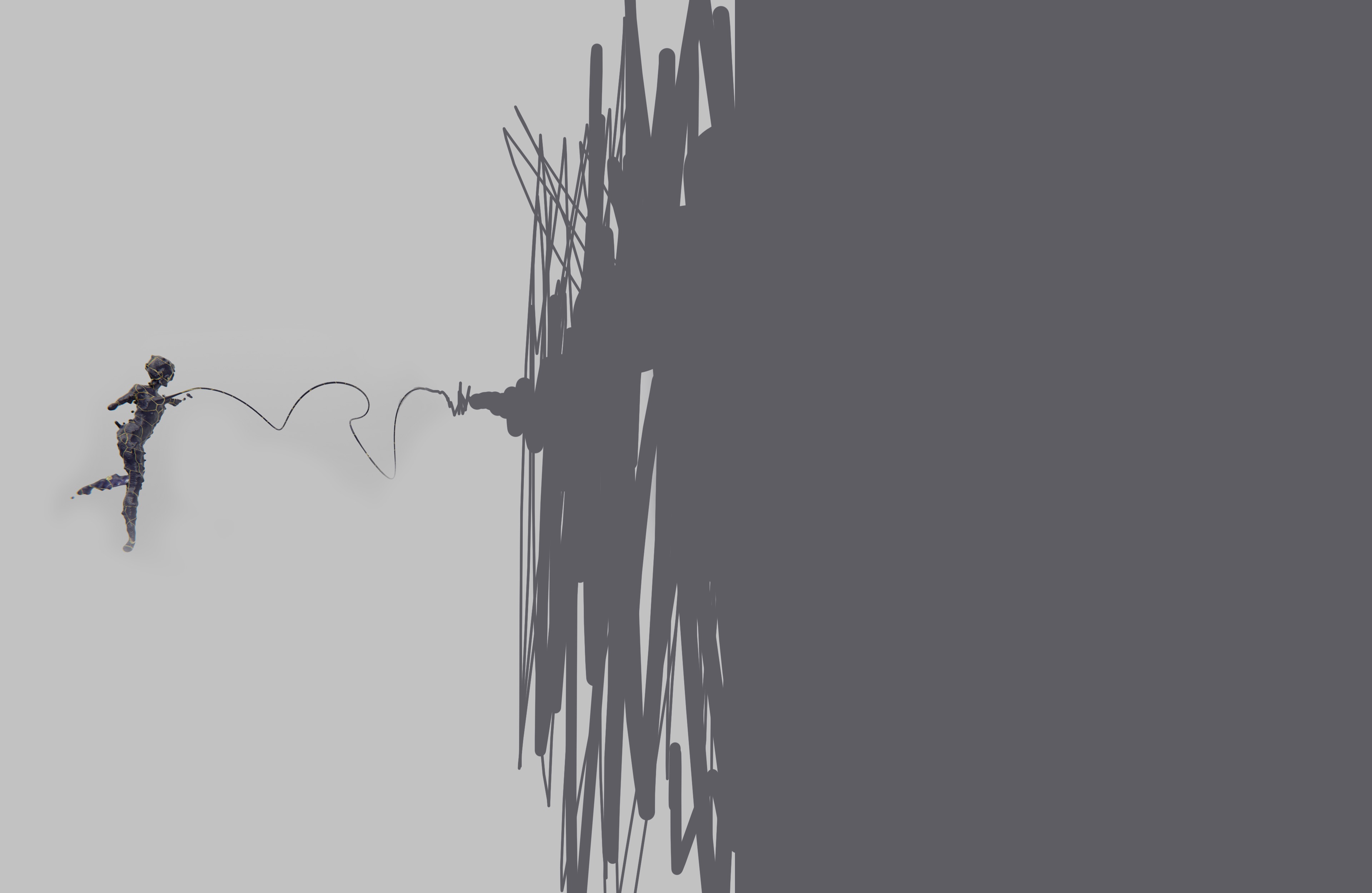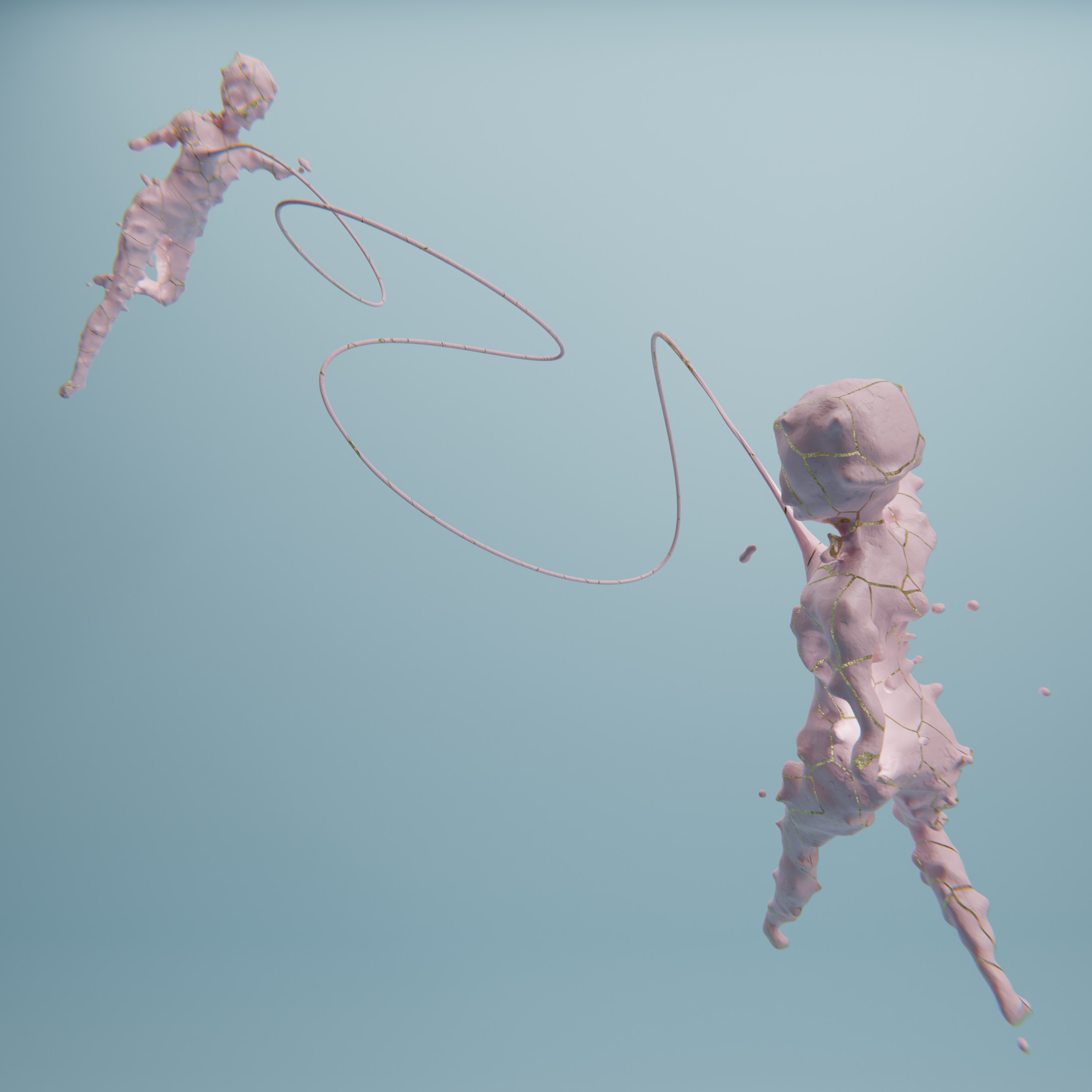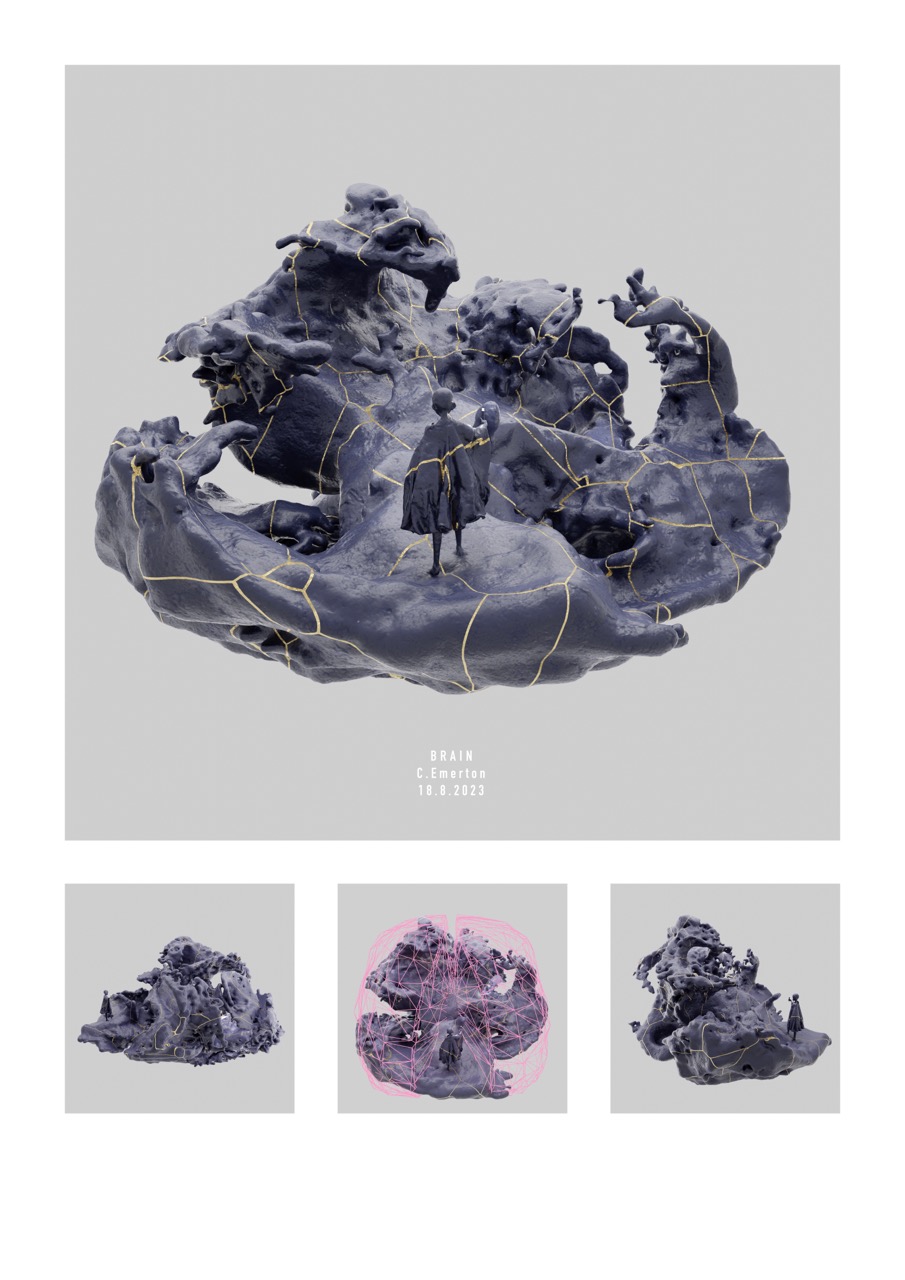
Living With Dying
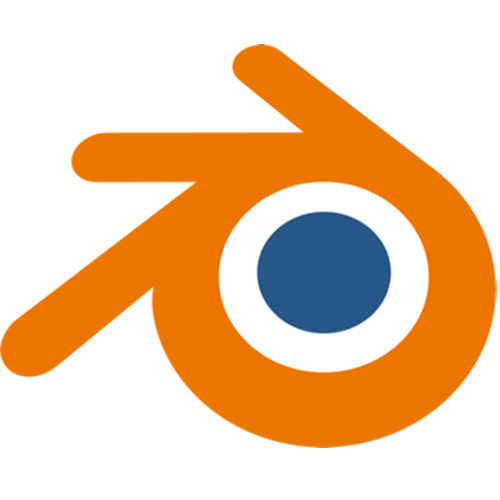

In this body of work consisting of 6 prints I explore the impact our context has upon our individual realities. The artworks are comprised of zero gravity fluid simulations contained within organic forms that i’ve sculpted into. Each work was printed at A2 scale and is currently exhibited at Nngunggula gallery as part of the ArtExpress 2024 exhibition.
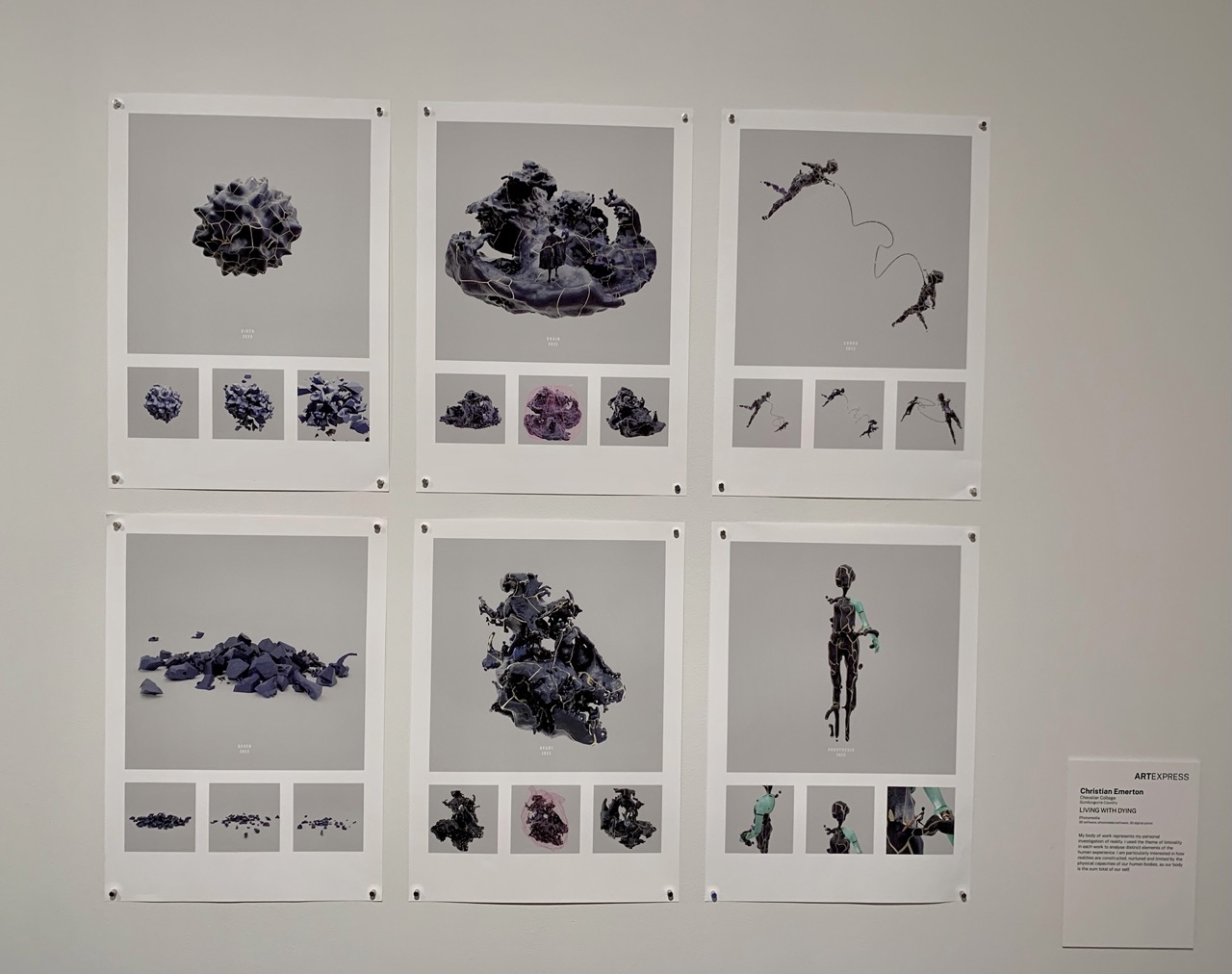
Visual Development
I spent quite a while developing the language of signs and symbols that I would use in this BoW. Because my ideas on the topics were still developing I’d often aquire new information that would lead to me shifting my views significantly, which would require me to rethink almost every component of my work to make sure it was communicating exactly what I wanted it to.
There were three key challenges in developing my pieces:
- Creating a procedural shader that would create the 金継ぎ(Kintsugi) texture across my works
- Learning how to simulate fluids, and then dialling in all the many parameters so that it would simulate properly, which had to be done on a work by work basis due to the differing environments the fluids were simulated inside of
- Conceptually developing each work so that they could support each other and be more than the sum of their parts.
Set1
Brain

The work seeks to encourage audiences to consider their reality not in terms of ‘internal’ and ‘external’ but rather as a fusion of the two. By having both the figure, and a brain-shaped terrain the figure is exploring be made out of the same material with no clear barrier between them, I hope audiences can come to appreciate an internal perspective on reality. i.e whilst light may exist outside of our bodies, colour and aesthetics are a distinctly human phenomenon existing solely inside our individual brains.
Heart
The Ancient Egyptian’s believed the heart to be the centre of human consciousness, much in the same way we now think about the brain. This work thus seeks to acknowledge knowledge acquisition as an ongoing, changing, and socially contingent process by depicting a fluid simulation contained within a heart. Exploring the ways our self-concept directly contributes to the ways we understand and construct our own realities.
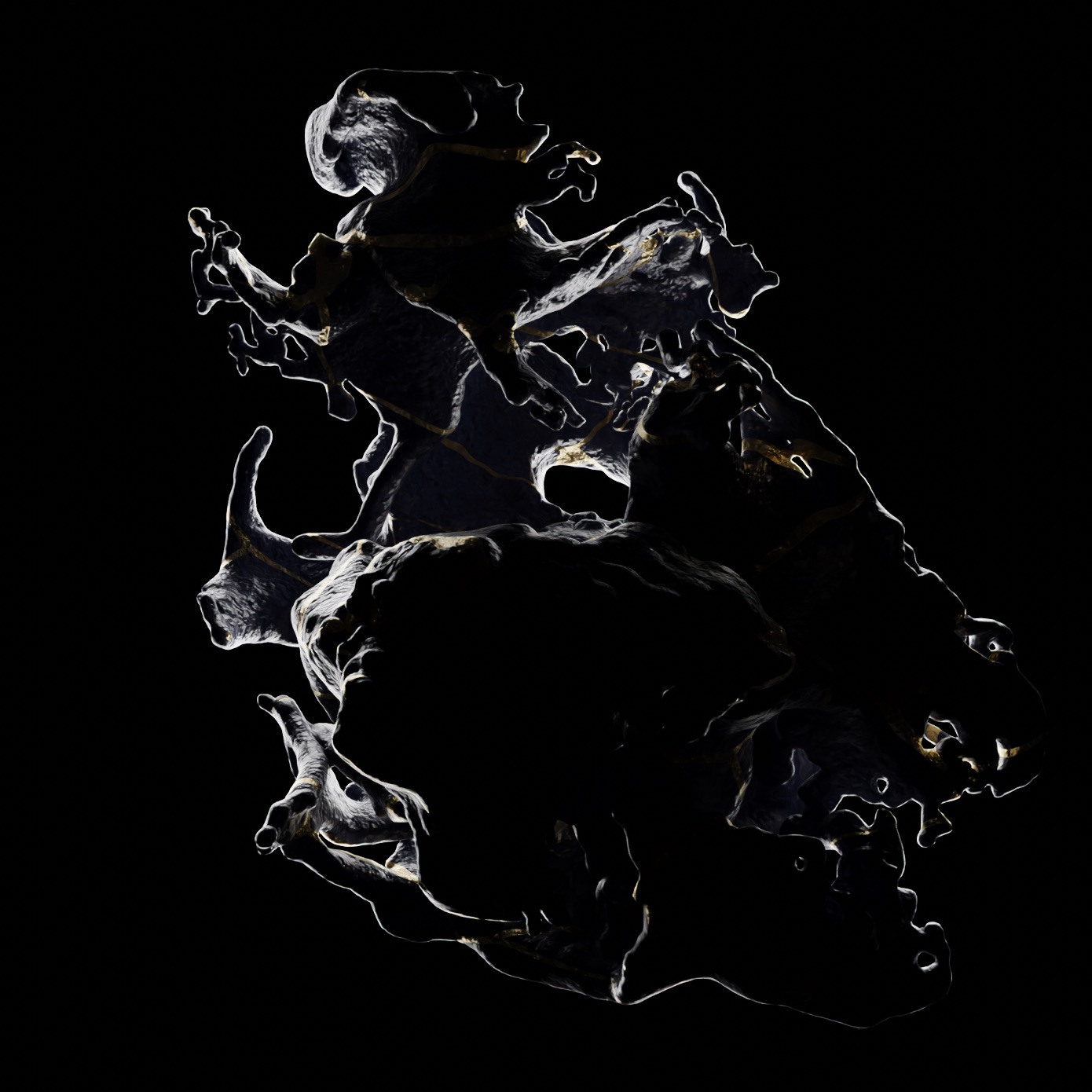
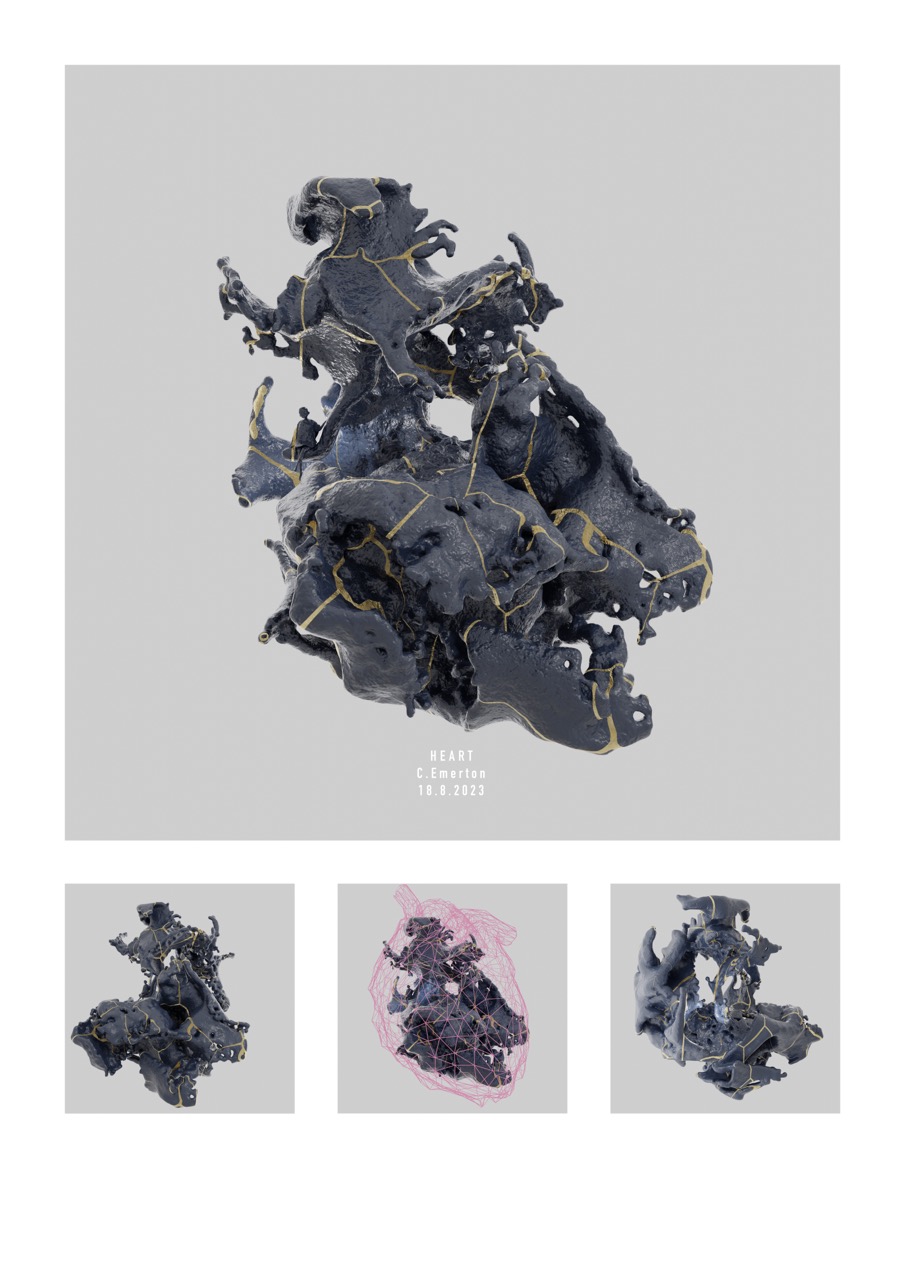
Set2
Birth
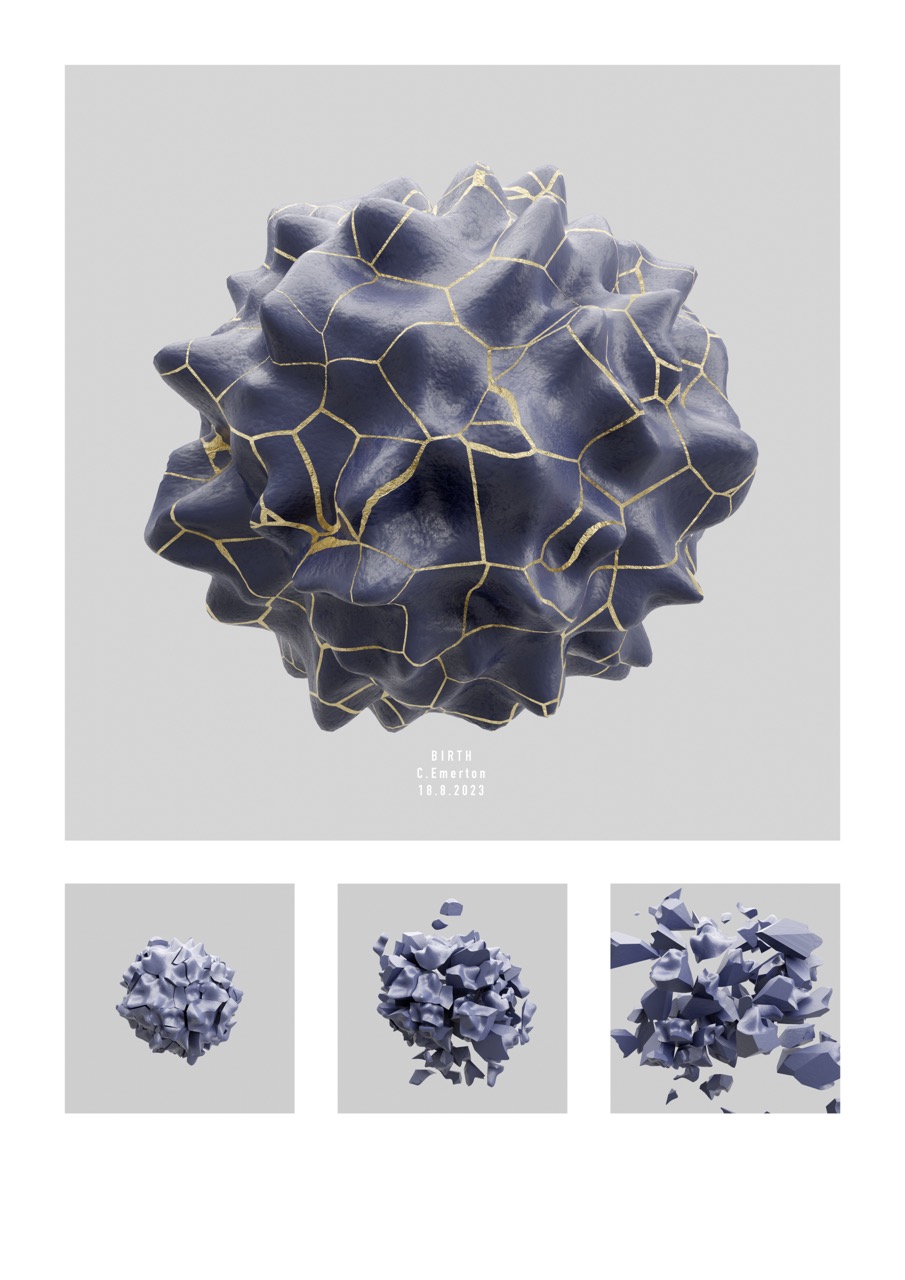
‘Birth’ aims to represent a person’s reality just after (or perhaps even before) their birth. Through the established visual conventions of my BoW I aim to challenge notions of natal purity, rather through the warped surface and kintsugi texturing I assert that even before we take our first steps in life, we are already subject to the mechanisms of our context.
The destruction sequence at the bottom of the print directly connects this work to the next work in this set: ‘death’. Reflecting the intrinsic causational relationship between birth and death. This is intended to convey a sense of ‘beautiful loss’ as the fluid simulation is paused and shattered before it has any time to fill out and explore its container, leaving the audience with little to no information about what this sculpture could have been if it weren’t shattered.
Death
Following on from ‘Birth’, this work aims to explore death as the end of change; as the fluid simulation is paused and the gold holding the pieces together removed, the sculptures fall into a piles where they sit unmoving and devoid of any dynamism that was present during their fluid expansion. By shattering four sculptures (one of which was created just for this piece) I hope to instil a sense of loss in the audience as they are unable to reassemble the sculpture and appreciate it in its cohesive form. Furthermore, by privileging the rubble I hope to highlight the value that we maintain even after we are long dead.
I was particularly inspired by the idea that ‘the only people that don’t change are the dead’.
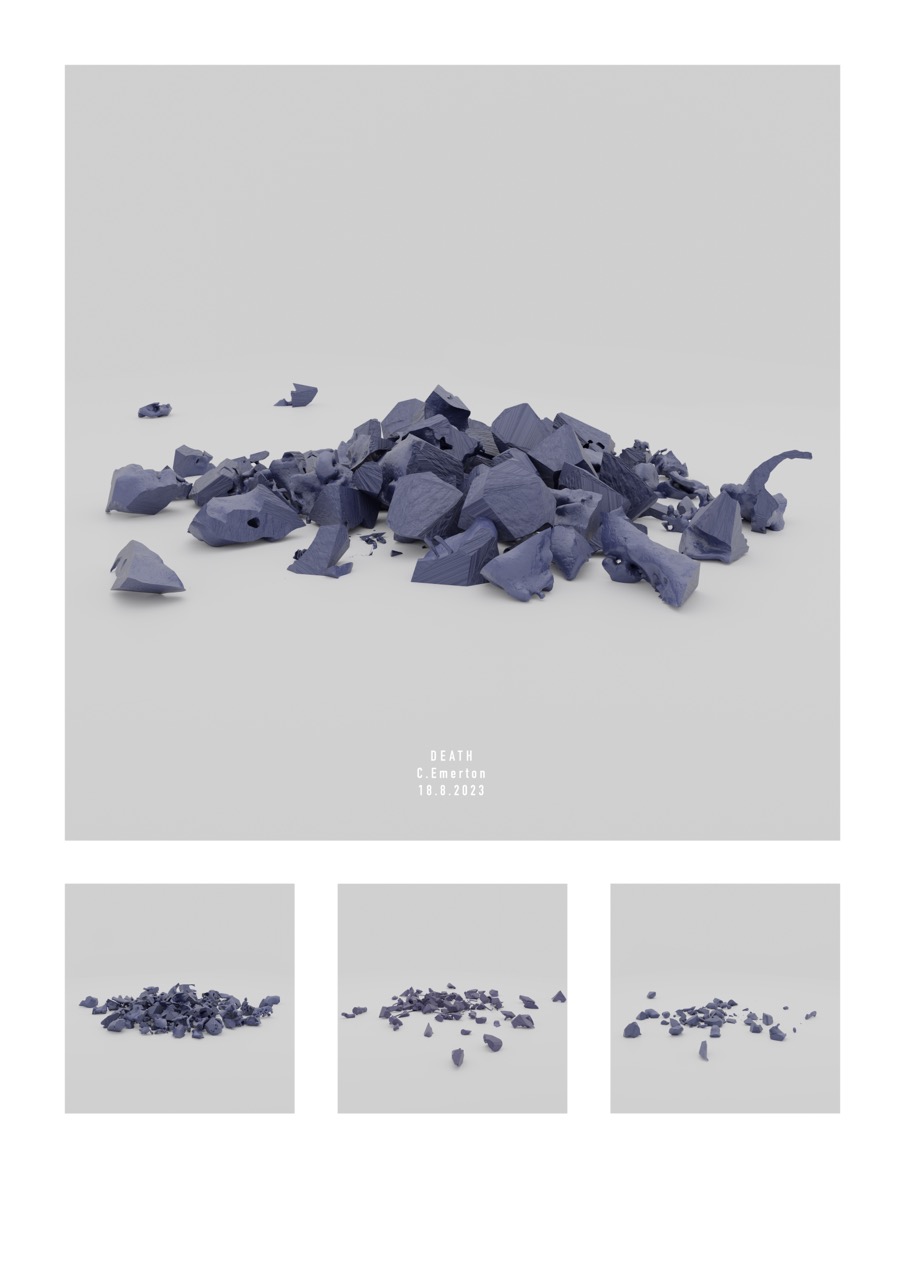
Set3
Prosthesis
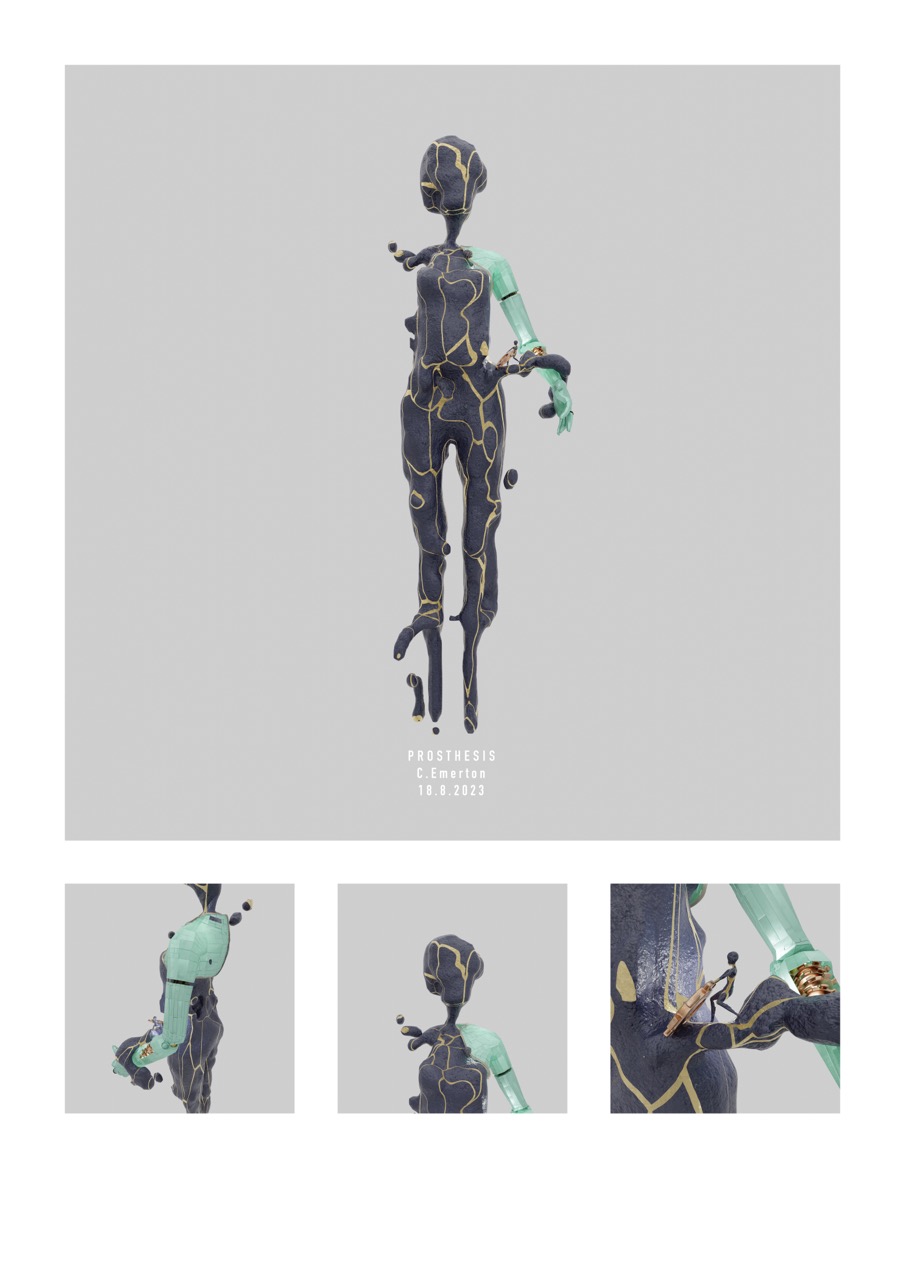
This piece serves to refute any notions of predetermination that may inadvertently arise in any other works in this series, instead this work seeks to assert the value of human ingenuity through posthuman ideals. For this piece I made the walls of the human container sculpture extremely thin so that little bits could escape and float away to reflect the excess of our realities that are lost in our symbolic ordering of the world (Žižek, 1989). The prosthetic and the little human dragging a cog are intended to highlight the ways our individual actions allow us to extend and morph our own realities, asking questions around the fixed nature of human identity as technology like prosthetics further and further blurs these boundaries.
Chord
This piece aims to explore the body as the sum total of a person. The visual representation of two human figures separating aims to convey the sensation of slipping apart, embodying the disconnection one might feel from their own body. ‘Chord’ delves into the dysphoria that can arise from the belief that our minds and bodies are distinct entities. By challenging the notion of an authentic self, this work encourages the audience to question the idea that they are anything more or less than their physical form. Through this exploration, ‘Chord’ seeks to dismantle the binary between internal and external realities, urging viewers to appreciate their existence as a seamless fusion of both.
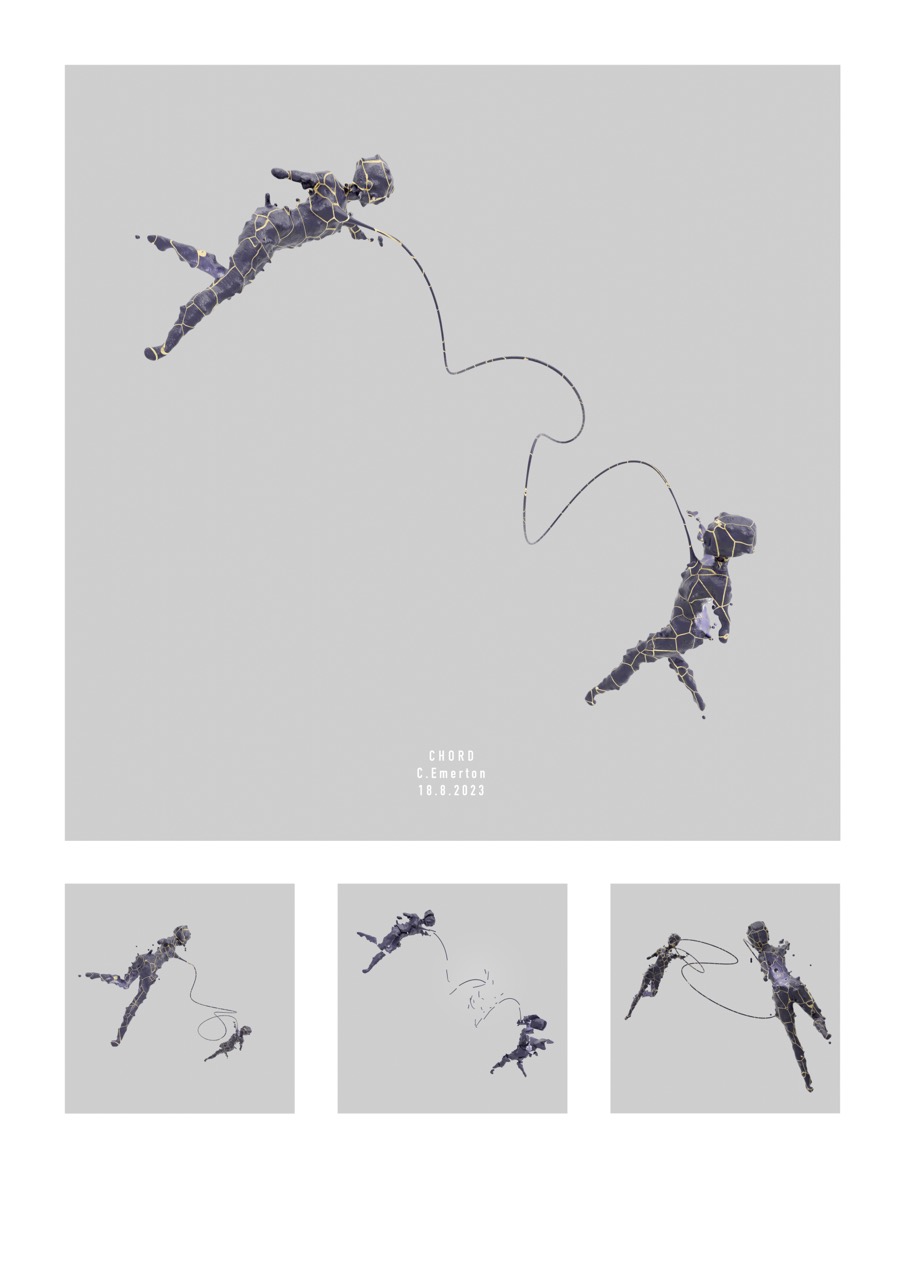
Sources: – Zizek 1989, Ancient egypt
